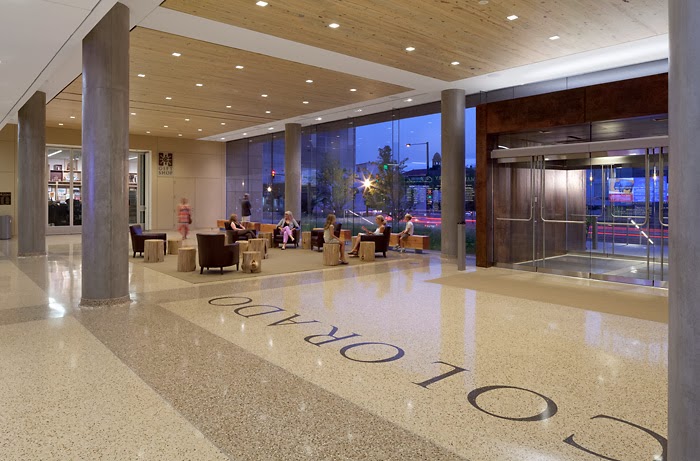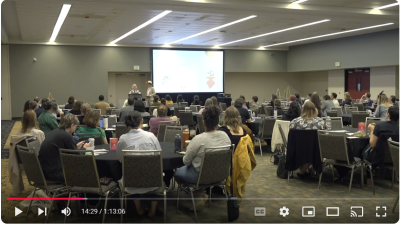
In the 1850’s, the Fifty-Niners flocked to Colorado to join the gold rush. In 1879, it was silver that drew adventurers to the state with visions of riches. Now the History Colorado is prospecting for a new kind of wealth—data. The museum’s chief operation officer, Kathryn Hill, shares the story of how this new, human-generated resource is enriching their operations.
 In 2008, the admissions desk at the Colorado History Museum doubled as the security command center. Next to the security console sat a solitary cash register, used by the daily volunteer to ring up ticket sales for the few thousand annual visitors—primarily tourists and 3rd graders on field trips. Today, visitors to the History Colorado Center encounter paid guest services representatives who sell tickets and memberships via a point-of-sale system equipped with business intelligence software. Since 2008, attendance and membership have doubled, and History Colorado, a brand new 134 year-old institution, has taken the leap into the 21st century.
In 2008, the admissions desk at the Colorado History Museum doubled as the security command center. Next to the security console sat a solitary cash register, used by the daily volunteer to ring up ticket sales for the few thousand annual visitors—primarily tourists and 3rd graders on field trips. Today, visitors to the History Colorado Center encounter paid guest services representatives who sell tickets and memberships via a point-of-sale system equipped with business intelligence software. Since 2008, attendance and membership have doubled, and History Colorado, a brand new 134 year-old institution, has taken the leap into the 21st century.
When the expansion of the Colorado State Justice Center precipitated the relocation of the Colorado History Museum in 2008, we recognized an opportunity to transform the institution and to embrace an audience-centered ethic to inform the new building design, the interpretive plan aimed at serving our community (especially families) and the ways in which we would do business. We made a commitment to improving all aspects of the service environment and to learning continuously about our audiences.
During the planning process, we made two important decisions. The first was to contract nearly all of the auxiliary services—retail, café, catering, guest services, custodial and landscaping—to a single vendor. Service Systems Associates (SSA) won the bid and became our partners in developing a seamless approach to visitor services and in selecting a single point-of-sale (POS) system for all of the revenue generating functions. SSA introduced us to Bright Star Partners, which prompted our second major decision: to purchase a business intelligence system (BI) to sit on top of the POS.
Skip over related stories to continue reading articleAccording to webopedia, ‘business intelligence’ refers to a single software system that tracks a lot of data that an organization has likely been previously documenting via several programs. For example, education, membership, development and marketing departments in an organization typically maintain independent databases. The BI integrates those various databases, generating what is known as big data analytics. Where we had previously operated on gut instinct or anecdotal evidence, big data now helps to affirm or challenge our conclusions about visitors. A single swipe of the membership or credit card captures myriad data about who is visiting, whether they’re members or donors, whether they’re coming as families or in adult pairs or alone, and from where. The BI tracks whether those visitors eat in the café or shop in the store, what they ate and what they bought.
From the outset, the three-way partnership between History Colorado, SSA and Bright Star has been critical. History Colorado’s primary interest in big data analytics stems from our mission to understand our audiences and to serve them effectively through our programs. Because their profitability is tied to our success, SSA has a vested interest in providing high-quality visitor services and in tracking the data to measure their progress. History Colorado and SSA share the expense of supporting a POS administrator, who works on site at the History Colorado Center. Bright Star provides the technological expertise that neither History Colorado nor SSA possesses and has worked with us to articulate our data needs and to configure the system to track and report the data in ways even non-technical decision-makers can easily absorb.
Sitting at our desks, in real time, we can access an array of data that inform our decision-making in a variety of ways. We imagined, for example, that our café would serve as a happy hour destination in a neighborhood long on local-area workers and short on local-area watering holes. What the BI data revealed, after a few short weeks, was a precipitous drop-off of café business after 3:00 PM on weekdays. To draw the after-work crowd, we would have to invest marketing dollars. We decided, instead, to offer the café as a rental venue for private gatherings, resulting is a new, much more lucrative revenue stream. We would have figured this out without BI, but it would have taken us much longer to gather the data, understand the trade-offs and make the decision.
Our advertising agency developed a geographic billboard plan to promote our latest exhibit. We were able to evaluate their map against the information we have about where our audiences live and make strategic decisions about advertising placement. Given the limited size of our marketing budget, we must make every dollar count.
History Colorado is far from expert in data mining. So far, we have exploited the data primarily to inform marketing and guest services. The Dallas Museum of Art uses BI to track audience use of specific exhibits. Business intelligence informs the Tate Museum’s collections use. The experiences of these museums inspire us, as we continue to mine our data in the interest of serving our audiences.









Comments